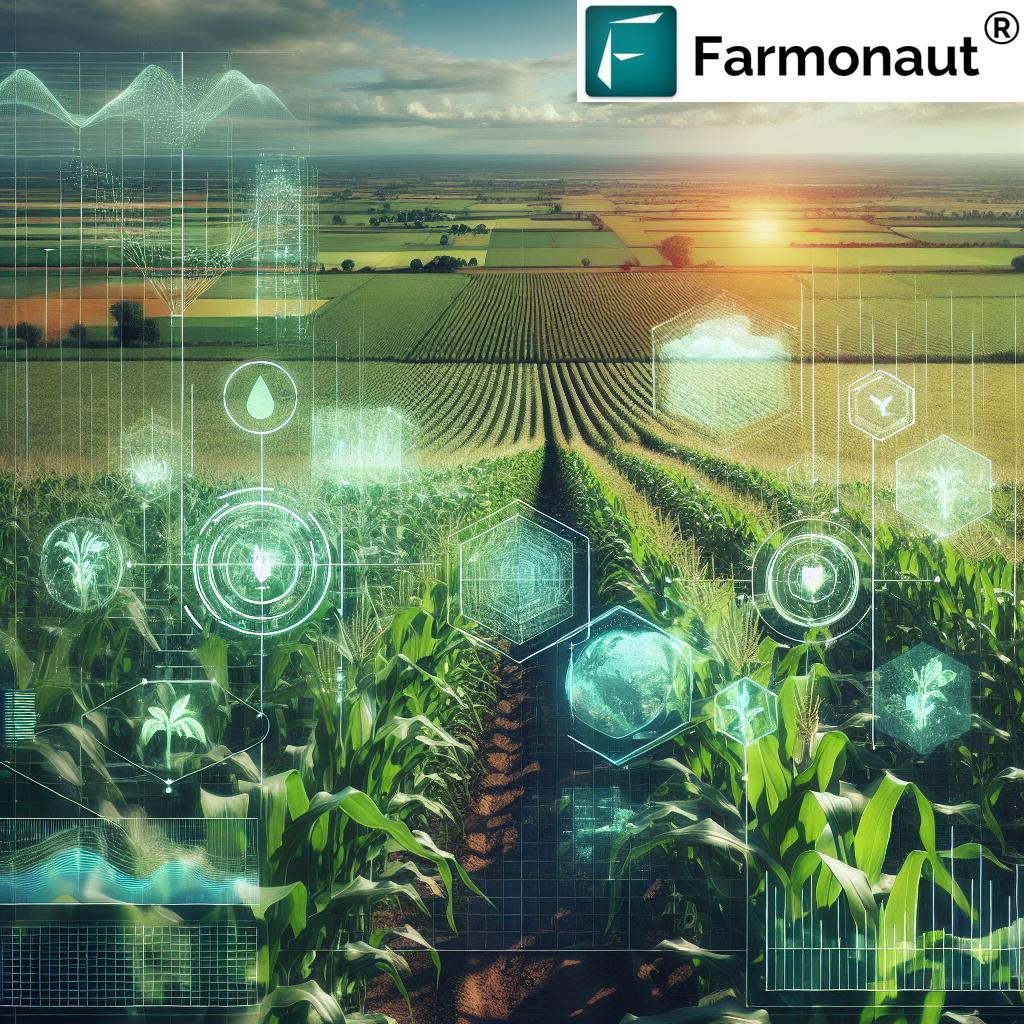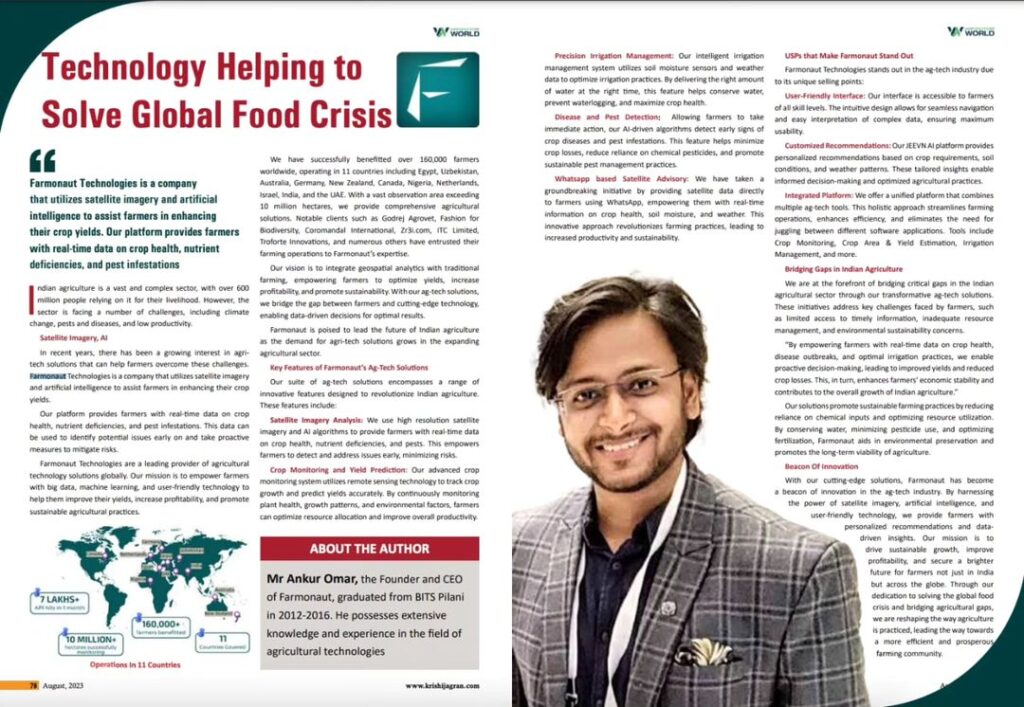Best Platforms for Data-Driven Farming: Top 5 in 2025
Data-Driven Farming: Revolutionizing Agriculture in 2025
In 2025, agriculture is undergoing a profound transformation—powered by rapid advances in AI, climate data, drones, and precise soil management. As farmers face mounting challenges—from climate variability and soil degradation to resource optimization—leveraging data has become essential for survival and sustainability. This comprehensive article explores the best platforms for data-driven farming in 2025, focusing on the cutting-edge technologies and companies shaping modern agriculture and ensuring robust profitability and productivity.
“In 2025, over 70% of top data-driven farming platforms integrate AI-powered climate data for real-time decision-making.”
The Profound Transformation of Agriculture in 2025
The landscape of agriculture in 2025 is unlike anything seen before. Advanced technologies, AI-driven climate data, and smarter drones have fundamentally changed how farmers approach farming, resource management, and crop selection. This revolution is not just about adopting new tools; it’s about enabling a culture that places data at the center of every farming decision, from irrigation scheduling to nutrient management, and from soil analysis to supply chain traceability.
But why has data-driven farming become so indispensable? The answer lies in the mounting challenges confronting the modern farmer—volatile weather patterns, unpredictable climate events, finite arable land, and the need for sustainable practices. Adopting precision technologies is no longer optional; it’s critical for efficiency, profit maximization, and environmental stewardship.
What is Data-Driven Farming?
Data-driven farming revolves around the strategic collection, analysis, and actionable use of data from various sources—AI climate data platforms, sensors, drones, machinery telematics, and satellite imagery. All these power smarter management, optimized input use, and risk mitigation at every production stage.
- Precision Tools: Enable variable-rate input application for water, fertilizer, and pesticide to individual zones or plants.
- AI Algorithms & Weather Models: Offer real-time climate insights, yield forecasts, and early alerts for pests or disease.
- Drones & IoT Sensors: Provide fast, detailed aerial imagery and soil health metrics.
- Management Platforms: Integrate all collected data into visual dashboards and actionable reports.
Top 5 Data-Driven Farming Platforms in 2025
Here are the best platforms for data-driven farming standing at the forefront in 2025. Each integrates advanced AI, climate data, remote sensing, and powerful management tools that enhance productivity, sustainability, and profitability for farmers worldwide.
- Farmonaut (Satellite technology & AI-driven insights)
- IBM’s The Weather Company (AI climate data platform for precise weather forecasting)
- Corteva Granular (Integrated digital farm management & analytics)
- Indigo Agriculture (Microbial science, remote sensing, and supply chain analytics)
- Climate FieldView (Bayer) (Sensor fusion and crop performance mapping)
“Precision agriculture tools now analyze more than 15 distinct soil types to optimize crop yields across global farmlands.”
Top 5 Data-Driven Farming Platforms in 2025: Key Feature Comparison
| Platform Name | Core Technology | Primary Features | Drone Integration | Precision Tools Supported | Coverage Area (ha) | Data Accuracy Rate (%) | Starting Price (USD/year) | User Rating (out of 5) |
|---|---|---|---|---|---|---|---|---|
| Farmonaut | Satellite, AI, Blockchain | Soil, crop, weather analytics; NDVI; Jeevn AI advisory; Blockchain traceability | Yes | Soil, weather, fleet, traceability, carbon footprinting, large-scale mgmt | Up to 500,000 (modular scaling) |
95-98% | $39+ | 4.8 |
| IBM The Weather Company | AI, Big Data, ML | AI-powered forecasts, weather analytics, risk analysis, alerts | No (partner solutions) | Climate & weather, risk modeling, irrigation planning | 100,000+ | 97% | $199+ | 4.5 |
| Corteva Granular | IoT, AI, Genetics | Farm management, seed genetics, field equipment data | Yes | Crop, soil, machinery analytics, yield mapping | 250,000+ | 94% | $800+ | 4.6 |
| Indigo Agriculture | Satellite, ML, Microbial Science | Soil/plant analytics, traceability, microbial applications | No | Soil/crop mapping, supply chain analytics | 150,000+ | 92% | $99+ | 4.4 |
| Climate FieldView (Bayer) | Sensor Fusion, AI | Field data mapping, yield prediction, weather data | Yes | Yield mapping, soil analysis, precision seeding | 200,000+ | 93% | $399+ | 4.6 |
*Data accuracy rates and prices are estimated for 2025. All values reflect the platforms’ most commonly used agricultural plans. Ratings sourced from aggregate user reviews and market analysis.
AI Climate Data Platforms: Navigating Uncertain Weather
The increased variability of global weather patterns—a direct result of climate change—has made traditional planting calendars increasingly unreliable. AI climate data platforms have emerged as critical tools for farmers globally, enabling smarter management of crops in the face of unprecedented challenges.
How AI Climate Data Platforms Revolutionize Farming
- Hyper-local Weather Forecasts: Platforms like IBM The Weather Company and Tomorrow.io (formerly Climacell) deliver real-time, location-specific forecasts using machine learning and vast climate datasets.
- Predictive Analytics & Modeling: AI algorithms analyze patterns and project risk of drought, disease, pest outbreaks, and yield, enabling informed decisions for both short and long-term planning.
- Data-Driven Applications: Farmers are able to optimize irrigation, planting, and harvesting schedules by integrating timely insights from these platforms into daily and seasonal operations.
- Strategic Risk Management: These predictive models allow for better crop selection and investment strategies, reducing the danger of losses.
With these AI-powered insights, agricultural management is no longer left to guesswork. Leading platforms provide continuous updates and analytics that help farmers pivot strategies quickly when weather conditions change.
What Sets IBM’s The Weather Company & Tomorrow.io Apart?
- IBM The Weather Company: Renowned for its powerful AI algorithms and global dataset, this platform offers actionable forecasts and precise risk analytics for cropping, irrigation, and planting schedules.
- Tomorrow.io (Climacell): Excels in hyper-local precision, sending alerts within minutes of changing weather—not just for agriculture, but for logistics, supply chain, and insurance as well.
Integrating these AI climate data platforms into your farm management toolbox is an optimal step toward sustainable, profitable, and risk-mitigated production.
Want to power up your agricultural software or custom apps with real-time satellite and AI insights?
Access Farmonaut’s API for seamless integration of satellite and climate data tools into your own digital solutions—empowering smarter decisions.
Developer? Explore the Farmonaut Satellite & Weather API Documentation for advanced features and custom programming.
Leading Data-Driven Agriculture Companies Shaping 2025
The best data-driven agriculture companies are at the heart of the transformation shaping global farmland in 2025. These industry leaders have mastered the art of integrating AI, satellite technologies, IoT devices, sensors, and machine learning to deliver actionable insights, optimize resource management, and increase sector-wide sustainability.
1. Farmonaut: Satellite, AI & Blockchain-Centric Platform
Farmonaut’s platform stands out for its breadth and accessibility. We bring affordable, scalable satellite insights, AI-powered advisories (via Jeevn AI), real-time crop health monitoring (using indices like NDVI and EVI), and blockchain-based supply traceability to users and businesses worldwide. This modular approach ensures data-driven farming is within reach for smallholders and large enterprises alike—no costly hardware required. Advanced environmental monitoring features (see Carbon Footprinting) help manage emissions and achieve sustainability goals.
2. Corteva Agriscience & Granular
A leader in seed genetics and digital farm management, Corteva delivers tailored crop production strategies by merging field sensor data, IoT-equipped farm machinery, and AI-driven dashboards. The Large-scale Farm Management solutions (like Farmonaut’s platform) mirror this scalability for agribusiness, offering actionable analytics, resource monitoring, and logistical optimization for fields spanning tens of thousands of hectares.
3. Indigo Agriculture
This innovative company leverages satellite imagery, machine learning, and proprietary microbial science to improve crop health, optimize resource inputs, and promote sustainable agricultural practices. Traceability takes center stage, with farm-to-market blockchain solutions guaranteeing authenticity and transparency across the supply chain.
4. Climate FieldView (Bayer)
Known for sensor fusion and powerful yield mapping tools, this platform combines farmer-collected data, weather analytics, and satellite images to help users optimize their entire operation—from soil mapping to market analytics and precision fertilization.
5. IBM’s The Weather Company
Combining the largest private weather database, AI, and big data analytics, IBM’s platform is unmatched in climate risk assessment and forecasting, enabling smarter planning and robust input optimization across every cropping system.
Best Drones for Farming in 2025: Aerial Data & Precision Agriculture
The best drones for farming in 2025 are no longer just about getting a “bird’s-eye view”—they’re precision tools seamlessly integrating with data platforms to enable crop health assessment, early warning for pest/disease, and highly efficient aerial application of nutrients or crop protection products.
Key Features of Advanced Farming Drones
- Multispectral sensors – Detect plant health, stress, and nutrient deficiencies invisible to the naked eye.
- AI-enabled analytics – Generate prescription maps for variable-rate spraying or treatment.
- Autonomous flight and obstacle avoidance – Enhanced efficiency and safety on large, complex farmlands.
- Long endurance – Some models exceed 90 minutes flight time for expansive coverage.
2025’s Top Drones:
- DJI Agras T40 Series: Known for industry-leading payloads (liquid & granular), AI guidance, multispectral imaging, and superior safety.
- SenseFly eBee X: A fixed-wing titan favored for detailed aerial mapping of very large fields (up to 500 ha per flight).
- Specialized Spraying UAVs: Deliver precise, site-specific pesticide/fertilizer applications, reducing input use and off-target drift.
As real-time field data from drones feeds directly into AI climate data platforms and management software like Farmonaut, it automates everything from input planning to yield forecasting. This synergy is essential for achieving next-level profitability and sustainability.
For security, resource allocation, and operational efficiency, explore advanced Fleet Management solutions in agriculture and allied sectors—powered by real-time AI and satellite insights.
Optimal Soil Types for Data-Driven Farming
Many technologies focus on extracting actionable insights from data—but it all begins beneath your boots: soil is the literal and figurative foundation of farming. Variable soil types exist, spanning loamy, clay-rich, sandy, silty, peaty, and even saline soils—each bringing unique challenges and potential. The best soil type for farming, however, is typically the loam—offering balanced drainage, aeration, and nutrient retention.
| Soil Type | Drainage | Nutrient Retention | Suitability for Precision Tools |
|---|---|---|---|
| Loamy | Excellent | High | Optimal |
| Clay | Poor | Very High | Improved with sensors & drainage |
| Sandy | Excellent | Low | Needs moisture management/timed irrigation |
| Silty | Moderate | Moderate | Good with comprehensive soil analytics |
| Peaty | Poor | High | Requires water control & acidity management |
Smart Soil Monitoring: From Satellites to Rootzone Sensors
Modern sensors and satellite analytics enable real-time measurement of moisture, temperature, salinity, and nutrient levels. Platforms like Farmonaut integrate these advanced data layers to give farmers field-specific recommendations—ensuring optimal production for each unique plot.
For reliable soil health analytics anywhere in the world, see Farmonaut’s Satellite-Driven Crop Plantation & Forest Advisory Platform.
Farmonaut: Satellite-Powered Data-Driven Farming – Our Value Proposition
At Farmonaut, our mission has always been clear: Democratize access to satellite, AI, and blockchain-powered insights—empowering farmers, agribusiness, and governments worldwide. Whether you’re a smallholder, large enterprise, or a policymaker, our technology brings actionable data for every step of the agricultural value chain.
- JEEVN AI Advisory System: Delivers real-time recommendations on crop inputs, weather, and crucial farm operations by integrating satellite data—for maximum productivity and profitability.
- Blockchain Traceability: Ensures transparency and trust in supply chain management—track inputs from farm to market.
- Resource Management Tools: Optimize fleets, machinery, and labor for efficient field logistics and operational scaling.
- Carbon Footprinting: Monitor and manage your environmental impact for sustainable agriculture and compliance. See how satellite carbon tracking works.
- Insurance and Lending Verification: Reduce risk by providing lenders and insurers real-time satellite assessments of crop and land status.
- API and App Integration: Connect our tools with your own management systems for custom dashboards and automation.
Learn more about satellite-driven crop loan and insurance verification.
Ready for affordable, scalable, subscription-based satellite insights?
Frequently Asked Questions (FAQ) — Data-Driven Farming Platforms 2025
What is the most important feature of the best platforms for data-driven farming?
The integration of AI-powered climate data, satellite imagery, and real-time analytics is crucial. Platforms capable of connecting advanced analytics with easy-to-understand dashboards empower farmers, agribusiness, and policymakers to make timely, informed, and profitable decisions.
How do drones help with precision agriculture?
Drones collect high-resolution, multispectral images over fields, enabling early disease/pest detection, monitoring crop growth, and generating prescription maps for input application. When integrated with the best data platforms, drones optimize resource use, reduce input cost, and accelerate yield improvements across all soil types.
Why is loam considered the best soil type for farming?
Loam balances sand, silt, and clay, ensuring optimal drainage, nutrient retention, and root penetration. It’s highly responsive to variable-rate irrigation and fertilization—making it ideal for precision-driven, data-based agriculture.
What advantages does Farmonaut offer for agriculture and related industries?
We provide affordable, real-time satellite, AI, and blockchain-powered insights for agriculture, mining, and infrastructure via app, web, or API. Our platform covers everything from soil and crop health analytics to fleet management, supply traceability, and environmental compliance—democratizing access to advanced agri-data for every user, everywhere.
The Future of Data-Driven Farming: Summary and Conclusion
In 2025 and beyond, data-driven farming stands as the gold standard for revolutionizing agriculture. AI-powered weather prediction, advanced drone integration, actionable soil health monitoring, and seamless farm management platforms—all have become indispensable. The best platforms empower farmers to face mounting challenges like climate variability, soil degradation, and resource management imperatives—while keeping their operations profitable and sustainable.
Farmonaut’s mission is to bridge the digital divide with accessible, effective satellite and AI-powered solutions—helping farmers, businesses, and governments thrive in an ever-shifting global market. Now, farmers can monitor their lands, track resources, ensure supply chain authenticity, and manage environmental footprints with a few taps or clicks—anytime, from anywhere.
With AI, sensors, drones, and remote sensing at the heart of your strategy, data-driven agriculture is not just the future—it is today’s smartest investment. Stay ahead with the latest trends, leverage the best platforms, and harness precise insights to optimize every aspect of production—from soil to sky and seed to shelf.














